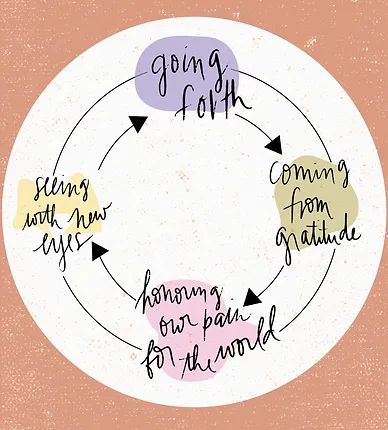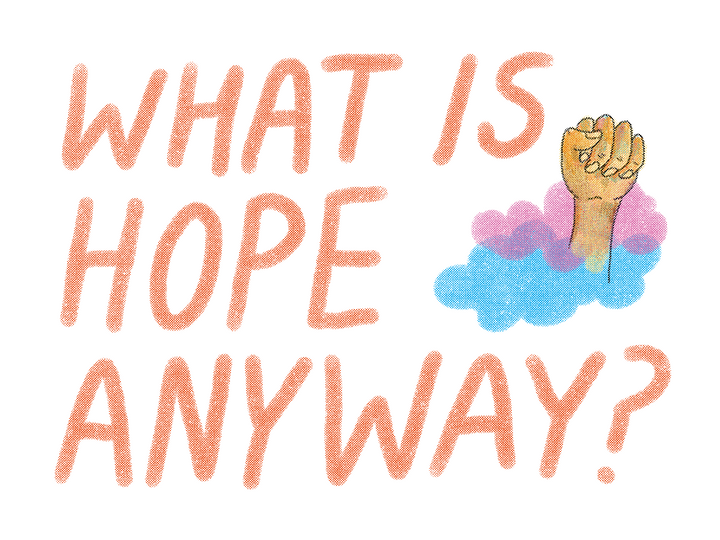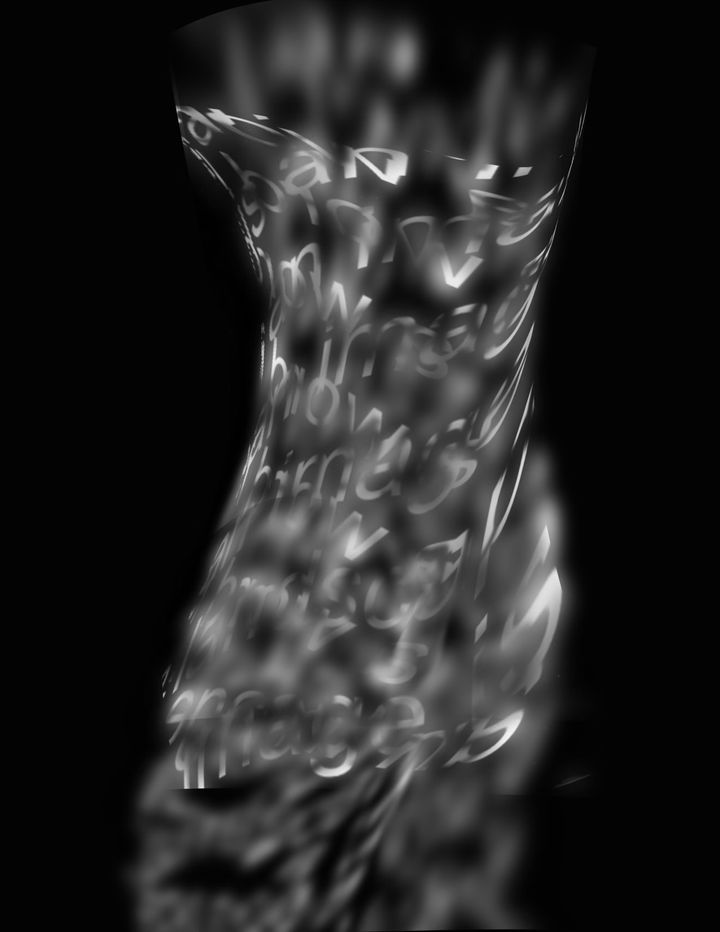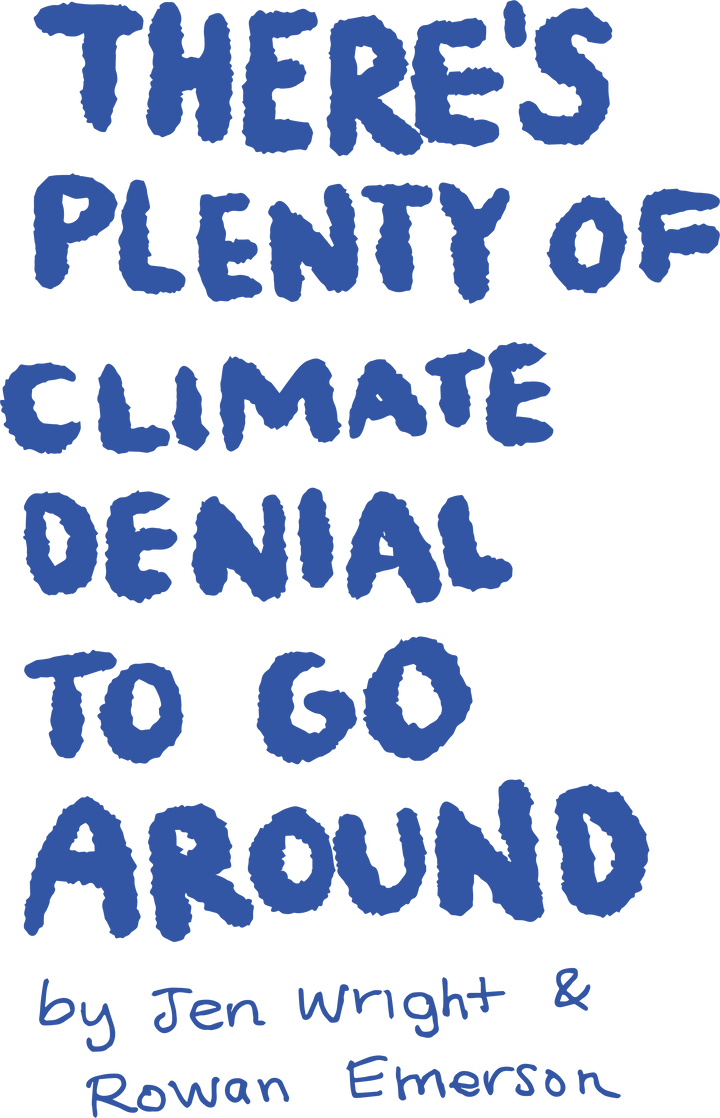Finding Hope in the Midst of Chaos
Sydney Bollinger discusses Active Hope: How to Face the Mess We're In Without Going Crazy by Joanna Macy.

The Montana night sky was frigid and dark save for the silhouettes of mountains in the distance. I stood on someone’s back deck, loosely laced boots and three layers under my winter coat. and milled about. Susie, who lead the group, had instructed us to do so — mill about, refrain from eye contact, feel the overwhelming busyness of the world recreated atop the creaking wooden planks.
Susie told us to stop and pair up with the closest person. She was mine. I held her mittened palms with my bare, cold-chapped hands. Susie looked into my eyes, her stare wateryI felt my own tears form, noticing how they seemed to freeze on their way down my face. The intensity of the moment transcended time. While we stood in the cold, I knew her a lifetime despite only having met her once before.
Susie was leading us through an activity called The Milling, helping participants come face-to-face with the human impacts of the climate crisis. As Susie and I stood there, I contemplated her death at the hands of climate disaster while she contemplated mine. The two of us and a handful of other folks were among the first members of a new local chapter of Extinction Rebellion. The group wanted to process our grief for the world.
The Milling comes from The Work that Reconnects, a framework developed by Joanna Macy, an environmental activist and scholar of Buddhism, general systems theory, and deep ecology. Macy’s system provides a way for people to process these emotions, reconnect with the planet, and find hope that leads them to action.
Turning hope into action is the premise of Joanna Macy and Chris Johnstone’s book Active Hope: How to Face the Mess We’re in without Going Crazy. Through the book, Macy and Johnstone detail the process of The Work That Reconnects and how it applies to both activists and those so overwhelmed by the world’s problems that they do nothing. The authors frame the book around the concepts of passive hope and active hope, a hope that invigorates humanity to work toward creative solutions to mitigate this crisis and to restore our spirits.
Macy and Johnstone take the reader through the spiral of The Work that Reconnects, which “has a strengthening effect that deepens with each repetition.” It’s this work, spelled out and digestible, that makes this book worth reading over and over. Active Hope provides myriad activities and practices for both groups and individuals, making it an unparalleled resource for anyone engaging with the climate crisis. Macy and Johnstone’s work accesses a deep part of the soul that both aches for the world and has the power to move forward with love, enthusiasm, and most importantly, hope.
“The Milling” Activity Guide
Adapted from “The Milling,” revised by Molly Brown, incorporating ideas from a version by Kaia Svien, as part of The Work That Reconnects.
This nonverbal activity leads participants to silent encounters, which help participants to see their shared humanity.
The guide of the activity should ensure any statements or comments are non-manipulative to allow participants to express the fullness of their emotions.
Method
Create a large open space in a room or take the group outside, weather permitting. All words in italics are meant to be spoken by the activity’s guide.
Let your eyes go out of focus; you won’t bump. Use the whole space so we don’t get into a snarl in the middle. Soft vision and you won’t collide. If you find us all going in the same direction, turn around and go upstream.
In the first part, people are moving as if on busy city streets.
Hurry; this is modern society and time is money. Keep moving. No talking. You are an important person with important things to do. Feel the tension of making your way through all these moving obstacles.
Next, the pace slows and participants become aware of each other’s presence.
Now, slow down a bit. See the faces around you. Your eyes may engage as we pass.
Then begins a series of one-to-one encounters. Take care to point out that when they meet, they don’t need to lock eyes. They can simply relax their gaze and open their awareness to the whole person. Be sure to give ample milling time between encounters, to relieve the intensity and allow the experience to sink in.
The first encounter draws attention to the sheer presence of the other, and their choice to be here.
You find yourself in front of someone. Stop. If it’s comfortable, take their right hand in yours. This person is alive on planet Earth at the same time as you, born into the same period of crisis, danger, speed, and injustice. And this person has chosen to be here today, has chosen to put aside other activities, tasks and pleasures, in order to come here to join the rest of us in a time of deep foreboding and strife, to look together at what’s happening in our world. Feel your gratitude for your partner’s choice to be here and silently acknowledge your parting.
And we move on, go back to slow milling.
In the following encounter, the focus moves to the other person’s knowledge of our present situation, and their willingness to face it.
You are looking into the face of someone who knows the terrible injustice, inequality, and pain that surround and wound us all in different ways. This person knows this is going on, yet they haven’t closed their eyes, haven’t turned away. This person pays attention to all this. Experience your respect for their courage.
Silently acknowledge your parting. As we move on, go back to slow milling.
Now stop in front of your next partner. As you breathe and take in the presence of your partner, let your awareness open widely to hold the complexities and confusion this person experiences due to being born with their particular skin color, culture, abilities and disabilities, and gender. Open yourself up to the social privilege or discrimination this person may have experienced as a result. Now, invite yourself to open to the immeasurable and unnamed losses your partner has suffered for a lifetime of being deeply impacted by privilege or oppression.
Find a simple, silent way to acknowledge the journey that you each are making to come back fully to life and to partake in its shared and multifaceted richness.
Nod your head to acknowledge all that has moved through you in the presence of this partner.
Now move on and go back to slow milling.
In this last encounter, we acknowledge the danger each person faces on this planet and the gifts they can bring to it.
Moving on, we come to our last encounter. Facing each other, put your hands together palm to palm at shoulder height.
Before you stands someone living on a beautiful, fragile, and poisoned planet. In their body, as in yours, are toxins that can bring cancer and disease. This person, like you, can die from a nuclear accident or attack, or from a flood or drought or a plague triggered by the climate crisis. They could die at the hands of social injustice. We can face this together. We must not let our common danger separate us. Let it bond us.
Allow your awareness to open to the real possibility that this person will play a pivotal role in turning our world to a life-sustaining civilization. They have the gifts, the strengths, the motivation. Allow that possibility to enter your mind and let them know how you feel about it.


